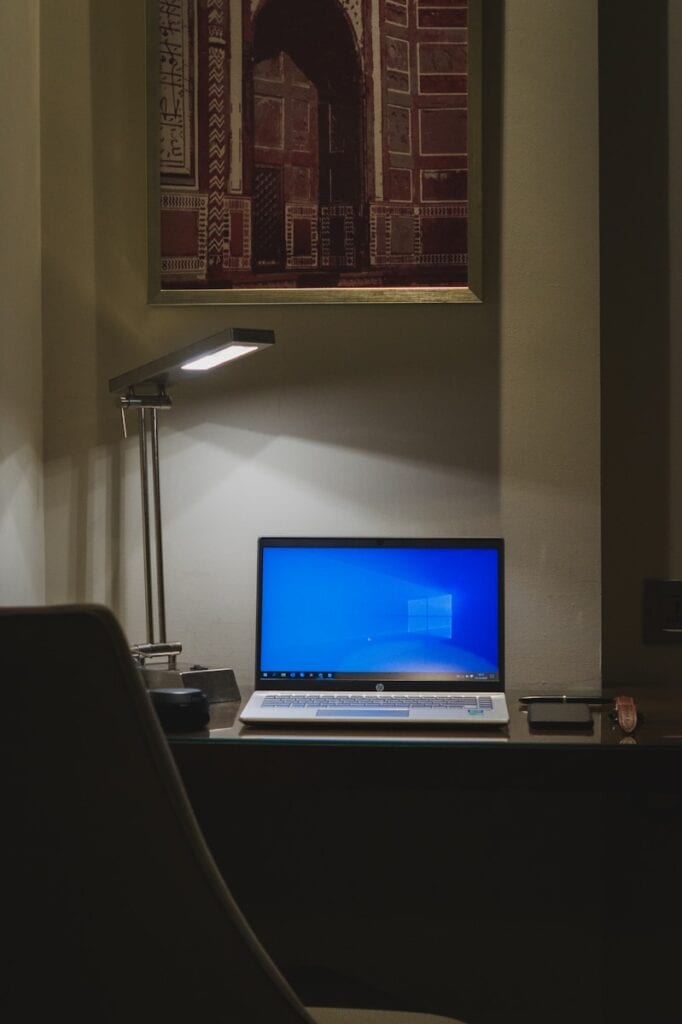How to Start a Blog On a Budget and Actually Succeed
Blogging Doesn’t Have to Break the Bank
You don’t need a fat wallet or fancy setup to learn how to start a blog on a budget.
You just need a plan, a few bucks, and a bit of grit. Most people get stuck thinking they need expensive tools or a pro designer to even get started. That’s just not true.
When I first looked into blogging, I had no clue what I was doing. I thought it would cost a fortune.
But I figured out real quick that you can launch a legit blog for less than the price of a full tank of gas.
If you’ve been dragging your feet because of money, this guide is for you.
I’ll show you exactly what to spend on, what to skip, and how to get your blog off the ground without draining your bank account.
By the time you finish this post, you’ll be ahead of 90% of the people who say they want to start a blog, yet never actually follow through.

What You Actually Need to Start a Blog
Starting a blog is way simpler than most people think.
In fact, you really only need three main things to get started, which are a domain name, a hosting plan, and a blogging platform.
That’s it.
Don’t let all the tech talk confuse you or make you think this is harder than it is.
In the next few sections, I’ll break each one down in plain English so you know exactly what to expect and what to do.
Domain Name
Your domain name is your blog’s web address, like bloglikeabro.com. It’s the first thing people see and it gives your blog a home on the internet.
I used Namecheap to get mine. It was quick, affordable, and super easy to set up.
I searched a few ideas, found one that wasn’t taken, and bought it for less than 10 bucks!
When picking a domain, stick with something short, memorable, and easy to spell. Avoid dashes and weird extensions if you can.
A .com still carries the most trust and recognition.
Before locking it in, check if your domain name is available on social platforms too. This helps keep your brand consistent later on.
Once you’ve bought your domain, you officially own your blog’s name and have taken the first real step toward launching.
It’s a simple move, but it makes everything feel real.
You’re no longer just thinking about blogging; at this point, you’re actually doing it.
Hosting Plan
For my blog, I chose the “Starter” package from BigScoots under their Managed Hosting for WordPress plan. It wasn’t the cheapest option out there, but it’s easily one of the best investments I’ve made for this blog.
The setup was almost completely hands-off. After signing up, everything was handled for me. I didn’t have to deal with any complicated tech stuff, which was a huge relief.
Their customer support team is seriously top-notch. Anytime I’ve had a question or hit a wall, they’ve been quick to respond and ready to help. And I’m not just saying that.
One time, I needed a robots.txt file created for my site. I reached out to support, and within minutes, it was done.
No stress, no back and forth.
If you’re serious about going all in on your blog and want peace of mind, BigScoots is worth every penny.
You get solid speed, excellent reliability, and support that actually cares. Sure, there are cheaper hosts out there, but they come with headaches and slow load times.
I wanted something I could count on, and this was it.
If you’re treating your blog like a real business, then this is the kind of hosting that backs that up.
Blogging Platform (WordPress)
When it comes to blogging platforms, there are plenty of options such as Wix, Squarespace, Blogger, etc., but none of them come close to what WordPress offers.
If you’re trying to figure out how to start a blog on a budget while still having room to grow, WordPress is hands-down the best choice.
It powers over 40% of all websites for a reason. You get full control, endless customization, and access to thousands of free plugins and themes.
Even better, it works seamlessly with ad networks like Mediavine, making monetization way easier down the line.
Don’t let the tech side of WordPress scare you. Most of the setup is handled by your hosting provider with one click.
And when you do run into something, there are tons of tutorials and forums online to walk you through it.
It’s not just for advanced users or web developers. I started with zero experience, and now I’m running a blog that looks and works exactly how I want.
If you’re serious about building a real blog that can grow with you, WordPress is the platform to build it on.
Once it’s installed, you’re ready to start customizing, posting, and building something that’s truly yours.
Step 1 – Choose a Blog Topic You’ll Stick With
Before you buy anything or write your first post, you need to figure out what your blog will actually be about.
In my post, “Best Micro Niche for Blogging (For Guys Who Don’t Have It All Figured Out),” I break this down in a way that makes it simple.
Picking a niche can feel overwhelming, but that’s why I recommend going even narrower and choosing a micro niche.
A micro niche helps the Google algorithm understand what your site is about. That means you’ll have a better chance at ranking for search terms early on. It also keeps your content focused, which builds trust with readers.
You don’t have to marry your micro niche forever. Once your traffic starts picking up, you can expand into related topics naturally.
My own micro niche is helping Millennial men learn how to start and grow a blog they can eventually turn into a real online business. That’s the angle I write from.
You can do the same by picking something that you understand, care about, or want to learn more about.
Start small, stay focused, and grow smart. That’s the best path for beginners who actually want to see results.
Step 2 – Buy Your Domain (For Around $10–15)
This part is pretty straightforward, but there are a few things to keep in mind. When choosing a domain registrar, you want one that’s affordable, easy to use, and known for solid customer support. That’s exactly why I went with Namecheap.
Namecheap is one of the most trusted options out there. They offer a clean interface, free WHOIS privacy protection, and zero shady upsells during checkout. It’s beginner-friendly and gets the job done fast.
If you get stuck, their support center is full of simple guides to walk you through the process. And if you’re really confused, their live chat support is quick and helpful.
Once you lock in your domain, it makes everything feel official. This is the moment where your blog starts becoming real.
Step 3 – Pick Hosting That Doesn’t Suck (From $20/mo)
There are plenty of hosting options out there, but the one you choose should match both your budget and your goals.
As mentioned earlier, I personally went with BigScoots and picked their “Starter” package under the Managed WordPress Hosting plan.
It wasn’t the cheapest, but it offered unbeatable support and peace of mind.
That said, BigScoots might not be what you’re looking for. If you’re just testing the waters, other solid hosts like SiteGround or Bluehost are worth checking out too.
What matters most is choosing a host that’s reliable and beginner-friendly.
No matter which one you go with, make sure their support team is helpful and available. When I needed help setting up a robots.txt file, BigScoots handled it in minutes.
That kind of service goes a long way, especially when you’re new and figuring things out.
Step 4 – Install WordPress in One Click
Installing WordPress might sound complicated, but it’s actually one of the easiest parts.
Most hosting providers, including well-known names like BigScoots, SiteGround, and Bluehost, make it easy by offering one-click WordPress installation.
All you have to do is log into your hosting dashboard, click a button, and boom, your blog is live.
You won’t need to mess with code or deal with technical settings. It’s all handled for you in the background.
Once WordPress is installed, you can log in, start customizing your site, and begin creating content. It’s quick, painless, and beginner-friendly.
Step 5 – Use a Free Theme That Actually Looks Good
When I was getting started, I didn’t want to spend money on a premium theme. So I went with the free version of Kadence, and I’ve been using it ever since because it just works.
It’s one of the most popular free WordPress themes for a reason.
Kadence is lightweight, fast, and beginner-friendly. You can easily customize the layout, fonts, colors, and even add blocks without needing to touch a single line of code.
It looks great right out of the box and performs well, which is important if you care about site speed and user experience.
The free version gives you everything you need to build a clean, professional-looking blog. There’s no pressure to upgrade until you’re ready for more advanced features, and even then, it’s optional.
If you’re focused on how to start a blog on a budget, this theme is a no-brainer.
Plus, Kadence has solid documentation and an active user community, so if you get stuck, help is easy to find.
You don’t need to be a designer or developer to make your site look polished. Just install the theme, tweak a few settings, and you’re good to go.
Step 6 – Create These 3 Basic Pages
These three pages are small but important. They help build trust with your readers and give your blog a more complete feel right from the start.
They don’t have to be fancy. Just get them live so your blog looks like a real website.
You can always come back and improve them later.
About Page – Who you are and what your blog’s about
This is where you introduce yourself and explain what your blog is all about. Keep it short and casual, but give it some personality.
Let people know who you are, what your blog covers, and why you started it in the first place.
If you have a personal story or reason behind your blog, share a bit of it here. It makes you more relatable and builds trust with new visitors.
You can also mention what kind of content people can expect going forward and how often you plan to post.
This page doesn’t need to be long. Just make it honest, clear, and easy to read.
It’s your chance to show the human side behind the blog and set the tone for the rest of your content.
Contact Page – Add a form or email address
Make it easy for readers or potential partners to get in touch. You can either add a simple contact form or just list your email address.
I personally use a plugin called Fluent Forms, and I highly recommend it. Even the free version is packed with features, super easy to set up, and works great with most WordPress themes.
You can create clean, professional-looking forms in minutes without touching any code. Whether you want a basic contact form or something a little more advanced, Fluent Forms can handle it.
Having a contact page shows you’re accessible and serious about your blog. Plus, it opens the door to collaboration, guest posts, or even early brand opportunities down the line.
If you’re not sure how to set it up, Fluent Forms has helpful documentation and a friendly support team to walk you through it.
Blog Page – Automatically generated when you start posting
Your blog page is where all your posts live. WordPress sets this up automatically, so there’s no extra work on your end.
This is the main spot your readers will hit to catch up on what you’ve written.
You can leave it as your homepage or just link to it in your main menu, depending on what feels right for your setup.
If you plan to create a custom homepage down the road, you can still keep your blog page separate and assign it in your WordPress settings under ‘Reading’.
Don’t overthink the name. Just call it “Blog” so it’s clear. You want readers to know exactly where to click when they’re ready to dive into your content.
Step 7 – Write and Publish Your First Blog Post
This is the part where most new bloggers freeze. They get the site set up, pick a theme, and then hit a wall.
What do I write? What if it’s not perfect?
Let me save you some stress. You really don’t need to overthink it.
Your first post doesn’t have to target the perfect keyword or get a ton of traffic. It just needs to exist.
When I launched this blog, my first post was called “Why I Finally Started This Blog (And Why It’s Your Turn Now).”
I wasn’t trying to rank on Google or go viral. I just wanted to get something out there.
And you should do the same. Write about why you started your blog, who you want to help, or what you hope to share. Keep it real. The goal is to get past that first-post hurdle.
SEO and strategy can come with your next posts.
Once you hit publish, everything starts to feel more real. You’ve gone from planning to actually doing.
That’s a big deal.
You’re not just dreaming about having a blog.
At this point, you’ve actually got one live and ready to grow. And you’re already further along than most people ever get.

My Favorite Budget-Friendly Tools
If you’re serious about learning how to start a blog on a budget, these are the exact tools I use to make the process easier, smoother, and more affordable.
They’ve helped me plan content, create graphics, do keyword research, and even write posts faster. And the best part? Most of them are free or super cheap!
I’ll walk you through each one in the next few sections.
You’ll see how Canva, Notion, ChatGPT, and LowFruits can help you run your blog like a pro, even if you’re just getting started from scratch.
Canva (for graphics)
Canva is one of those tools that makes blogging way less stressful, especially if design isn’t your strong suit or you’re just getting started.
I’m no graphic designer, and I don’t pretend to be. But with Canva, I don’t have to be.
It’s packed with pre-made templates that look clean, professional, and way better than anything I could build from scratch.
A ton of bloggers use it for things like blog post graphics, Pinterest pins, and social content.
The free version gives you access to more than enough when you’re just getting started. You get drag-and-drop tools, stock photos, and a bunch of solid templates.
If you’ve got a few extra bucks to invest, Canva Pro steps it up big time with brand kits, magic resize, and access to way more design assets.
Not required, but it’s definitely nice to have.
Even if you’re brand new and just trying to learn how to start a blog on a budget, Canva helps your stuff look polished right out of the gate.
It’s one of the easiest wins you can get.
Notion (for planning)
Notion is a game-changer when it comes to planning out your blog. It’s clean, flexible, and helps keep everything in one place.
I use it to map out my blog post ideas, keep track of what stage each one is in, and store any research I want to reference later.
You can create a simple content calendar, a checklist for your publishing process, or even build a dashboard to organize your blog strategy.
It’s totally up to you. Whether you like structure or want something more free-form, Notion can adapt to how your brain works.
The best part is it’s free to use. You don’t need a premium account to get started, and there are tons of free templates online if you don’t feel like building from scratch.
If you want to take blogging seriously, using Notion to stay organized is one of the smartest moves you can make early on.
ChatGPT (idea generation, research, writing assistance)
This tool is straight-up God-tier. I used ChatGPT to help me discover this very niche, figure out who I’m writing for, and even shape my entire content strategy.
It helps me brainstorm post ideas, outline my articles, figure out where to place keywords, and even assist with the writing itself.
But let me be clear, I don’t just tell it to write an article and then copy and paste it into WordPress.
That’s a TERRIBLE strategy!
ChatGPT is powerful, but it’s not YOU. It doesn’t have your voice, your story, or your experience. That’s YOUR job.
Instead, I use it as a writing partner. I feed it ideas, get rough drafts, and then rewrite each section in my own words.
It helps me write faster without losing that personal touch. Even if you think you suck at writing, ChatGPT can help you create content that sounds legit.
Over time, the more you use it, the more you start picking up on writing patterns, sentence flow, and how to structure your posts.
So not only does it help you now, it also improves your writing skills over time and sets you up to grow as a blogger.
Total win-win.
LowFruits (for keyword research)
Wondering how to start a blog on a budget and still get found on Google? LowFruits is one of the smartest tools you can have in your corner.
It’s a lightweight keyword research tool made specifically for beginner bloggers.
Unlike those expensive SEO platforms that overwhelm you with data and drain your wallet, LowFruits keeps things simple and that’s exactly why I like it!
You plug in a topic, and it shows you low-competition keyword ideas where your blog actually has a shot at ranking. It helps you avoid wasting time writing posts that never get seen.
The interface is super clean, and it even highlights keywords where weak sites (like forums and Quora threads) are ranking.
That’s your chance to swoop in with something better.
The free version lets you run a few searches, but if you’re serious about growing traffic, the paid version is worth it.
You don’t need to be an SEO expert. Just use it to find smart topics, then focus on writing useful content.
Out of all the SEO tools I’ve tried, LowFruits has been the easiest to stick with. It just works and for new bloggers on a budget, that’s a big deal.

Final Thoughts (You’re Further Than Most People Ever Get)
Did you know most blogs never make it past the first few posts? It’s true. People get excited, set everything up, and then freeze.
So if you’re feeling nervous or overwhelmed right now, that’s normal. But also, you’re not alone. Just reading this post means you care enough to learn how to do it right, and that already puts you ahead of the crowd.
Even if you haven’t taken action yet, the fact that you’re here, thinking seriously about starting, matters more than you realize.
Here’s what I want you to remember. You don’t need perfection to get started. What matters most is that you just take the first step.
Just start. Pick your domain. Choose a host. Write your first post. Focus on progress, not perfection.
The tools, strategies, and tips I shared in this post are all things I personally use or believe in.
I’m not an expert (gasps)
Yes, it’s true. I’m just a regular guy figuring it out as I go. And if I can do it, you absolutely can too.
Blogging has the power to change your life if you stick with it. It can open doors, create income, and give you a voice. So don’t quit before you even begin.
And hey, if you ever have questions, feel free to reach out. I’ll help however I can.
You’ve got this.




